It can be difficult and stressful to work in a contact center. Employees may become burned out and experience significant turnover rates due to the continuous influx of customer queries, differing degrees of complexity, and the requirement to maintain composure.
How can businesses prevent burnout amid a crisis, particularly in the contact center? Before thinking about strategies to avoid contact center burnout and reduce turnover rates, you need to understand what it is and how it affects organizations.
What is contact center burnout and turnover rate?
Contact center burnout and turnover rate are two related but distinct concepts in the field of customer service and contact center management.
Contact center burnout refers to the physical and emotional exhaustion experienced by employees who work in customer service or call center environments. It is often a result of prolonged periods of high stress, heavy workloads, and the repetitive nature of tasks, such as handling a large volume of customer inquiries or complaints over the phone, email, or chat.
Employee turnover rate, often simply referred to as “turnover rate,” is a metric used by organizations to measure the rate at which employees leave their jobs and are replaced by new hires within a specific time period. It is typically expressed as a percentage and is used to assess the stability of a company’s workforce.
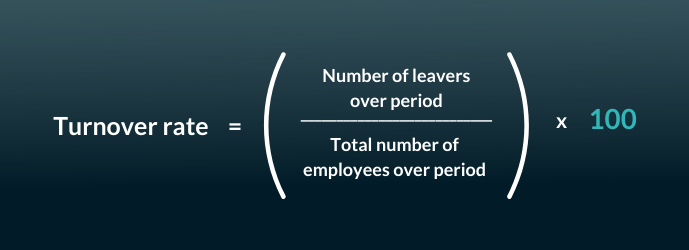
The formula to calculate the employee turnover rate is:
(Number of Employees Who Left During a Period/Average Number of Employees During the Same Period)X100%
What causes burnout?
Burnout is a complex phenomenon with multiple causes, and it typically results from a combination of factors, both personal and work-related.
Burnout in customer service, often referred to as “customer service burnout,” is a specific form of burnout that results from the unique challenges and stressors associated with working in customer-facing roles.
Here are some of the common causes and contributing factors to burnout in customer service:
1 . Excessive Workload: Customer service representatives often face high call volumes, a constant stream of inquiries, and tight response timeframes. Dealing with a large number of customers and issues can be mentally and emotionally exhausting.
2 . Repetitive Tasks: Customer service agents frequently handle similar issues or questions repeatedly, which can become monotonous and lead to burnout.
3. Emotionally Demanding Interactions: Dealing with upset or irate customers, particularly in situations where agents have limited control over resolving the issue, can be emotionally taxing and draining.
4. Lack of Recognition: Feeling unappreciated or undervalued for the work they do can erode motivation and job satisfaction among customer service representatives.
5. Unclear Expectations: Confusion about job roles, responsibilities, or how to handle certain situations can create stress and anxiety.
6. Support and Resources: A lack of support from supervisors, inadequate tools or resources, and insufficient staff levels can make it challenging to meet customer needs and can contribute to burnout.
7. Emotional Exhaustion: Continuous exposure to emotional interactions, particularly negative ones, can lead to emotional exhaustion, a common component of burnout.
8. Negative Organizational Culture: A toxic or unsupportive workplace culture, where respect, empathy, and employee well-being are not prioritized, can foster burnout.
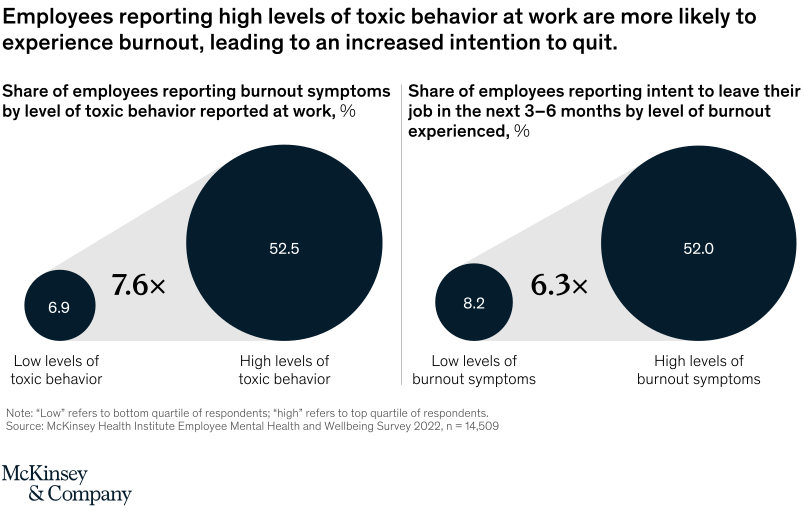
Employers pay a high price for toxic workplace behaviors since they are closely linked to burnout, which is correlated with leaving intent and eventually causes attrition. According to a survey by McKinsey & Company, employees who report high amounts of toxic behavior at work are eight times more likely to experience burnout symptoms.
By addressing these factors, organizations can reduce the risk of burnout and create a more positive and sustainable work environment for customer service professionals.
What are the signs of burnout?
Burnout in customer service can manifest in various ways, and the signs may be specific to the demands and challenges of the customer service industry. Here are some common signs of burnout among customer service representatives:
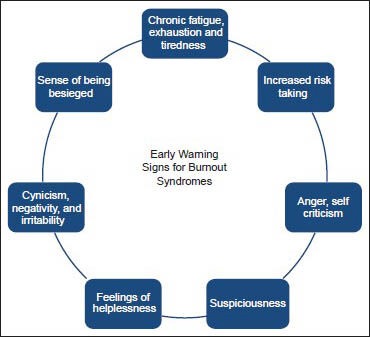
1 . Increased Emotional Exhaustion:
Frequent feelings of emotional exhaustion, particularly after interacting with customers who are upset or demanding. A sense of being emotionally drained by the end of the workday is commonly seen as a sign of exhaustion.
2 . Reduced Empathy and Patience:
A decline in the ability to empathize with customers’ concerns or remain patient in difficult interactions. Also, Increased irritability and a shorter temper when dealing with customers can be a sign.
3 . Decline in Performance:
Reduced performance and productivity in handling customer inquiries or resolving issues. Difficulty meeting performance metrics or goals.
4 . High Levels of Stress:
Persistent high levels of stress and anxiety related to job responsibilities. Physical symptoms of stress, such as tension headaches, muscle aches, or gastrointestinal issues.
5. Escalating Absenteeism and Tardiness:
Taking more sick days or being consistently late for work due to burnout-related physical or emotional symptoms.
6. Cynicism and Detachment:
A sense of cynicism or detachment from the organization, colleagues, or customers.
Feeling that one’s efforts are not making a difference or that the company does not value its employees. Withdrawing from social interactions with colleagues and becoming increasingly isolated at work.
7. Physical and Cognitive Health Issues:
Increased physical health problems, such as chronic fatigue, sleep disturbances, or frequent illnesses. A few other symptoms are difficulty concentrating, making decisions, or problem-solving.
It’s important for both employees and employers in customer service to recognize these signs of burnout and take proactive steps to address and prevent it. This may involve providing support, creating a healthier work environment, setting realistic expectations, and promoting employee well-being.
Burnout not only affects the individual’s health and job satisfaction but can also have negative consequences for customer service quality and customer satisfaction.

Impact of burnout on businesses
Burnout among employees in customer support can have significant negative impacts on businesses. Here are some of the key ways in which burnout can affect a company’s customer support operations:
1 . Reduced Productivity:
Burnout can lead to decreased productivity among customer support agents. Exhausted and overwhelmed employees are less likely to perform at their best, resulting in longer response times, decreased efficiency, and a lower volume of resolved issues.
2 . Decreased Quality of Service:
As burnout sets in, employees may become less patient, attentive, and empathetic when dealing with customers. This can result in a decline in the quality of service provided, leading to customer dissatisfaction and potential loss of business.
3. High Turnover Rates:
Burnout often drives employees to seek alternative job opportunities or even leave the company altogether. High turnover rates in customer support teams can be costly in terms of recruitment, training, and lost institutional knowledge.
4. Reputation Damage:
A decline in the quality of customer support can tarnish a company’s reputation. Negative customer experiences, such as rude or unhelpful interactions, can spread through word-of-mouth and online reviews, potentially driving away existing and potential customers.
5. Costs of Training and Onboarding:
Frequent turnover in customer support roles necessitates continuous recruitment, training, and onboarding of new staff. This incurs additional costs and can disrupt the stability of the customer support team.
To mitigate the impact of burnout on businesses in customer support, organizations should prioritize employee well-being, provide adequate support and resources, encourage work-life balance, and regularly assess and adjust workload and expectations. By doing so, they can maintain a high level of customer satisfaction, retain valuable employees, and sustain a healthy and productive customer support team.
5 ways to Prevent Contact Center Burnout and Reduce Turnover Rates

Preventing contact center burnout and employee attrition is essential for maintaining a productive and satisfied workforce. Here are five strategies to help achieve this:
1 . Implement Workload Management and Realistic Goals:
1 . Assign workloads that are manageable and achievable within a reasonable timeframe.
2. Set clear, realistic performance goals and expectations for agents.
3. Use workforce management tools to balance workloads and distribute tasks evenly among employees.
2 . Provide Comprehensive Training and Ongoing Support:
1 . Invest in thorough training programs for new hires to ensure they have the skills and knowledge needed for their roles.
2 . Offer continuous training and development opportunities to keep employees engaged and help them grow in their careers.
3. Maintain an accessible support system, including mentorship and coaching, to assist employees with challenging customer interactions and situations.
3 . Promote Work-Life Balance:
1 . Encourage and support work-life balance by offering flexible scheduling options, such as part-time or remote work arrangements.
2. Provide adequate time off and paid time off policies to allow employees to rest and recharge.
3. Implement shift rotation schedules that distribute the demands of different shifts evenly among team members.
4. Recognize and Reward Achievement:
1 . Establish a recognition program that acknowledges and celebrates agent accomplishments and milestones.
2. Offer performance-based incentives, such as bonuses or awards, to motivate and reward employees for exceptional service.
3. Foster a culture of appreciation and feedback, where supervisors and peers recognize and commend one another’s contributions.
5. Create a Supportive Work Environment:
1 . Foster open communication channels where employees feel comfortable discussing their concerns and ideas.
2. Develop a workplace culture that values employee well-being and provides resources for managing stress.
3. Regularly solicit employee feedback and act on it to make improvements in work processes and policies.
By implementing these strategies, contact centers can reduce burnout and employee attrition, leading to a more engaged, satisfied, and productive workforce. These efforts not only benefit employees but also contribute to improved customer service and overall business success.
Wrap-up
Burnout can cause talented customer service agents to become disengaged, frustrated, and ultimately, seek employment elsewhere. This cycle of attrition and burnout not only leads to increased recruitment and training costs but also disrupts service quality, as new hires may lack the experience and expertise of their predecessors. Therefore, addressing burnout is crucial.
Talk to our product squad: Schedule a demo today!
,
,
,
,
,
,
,
,
,
,
,
,
,

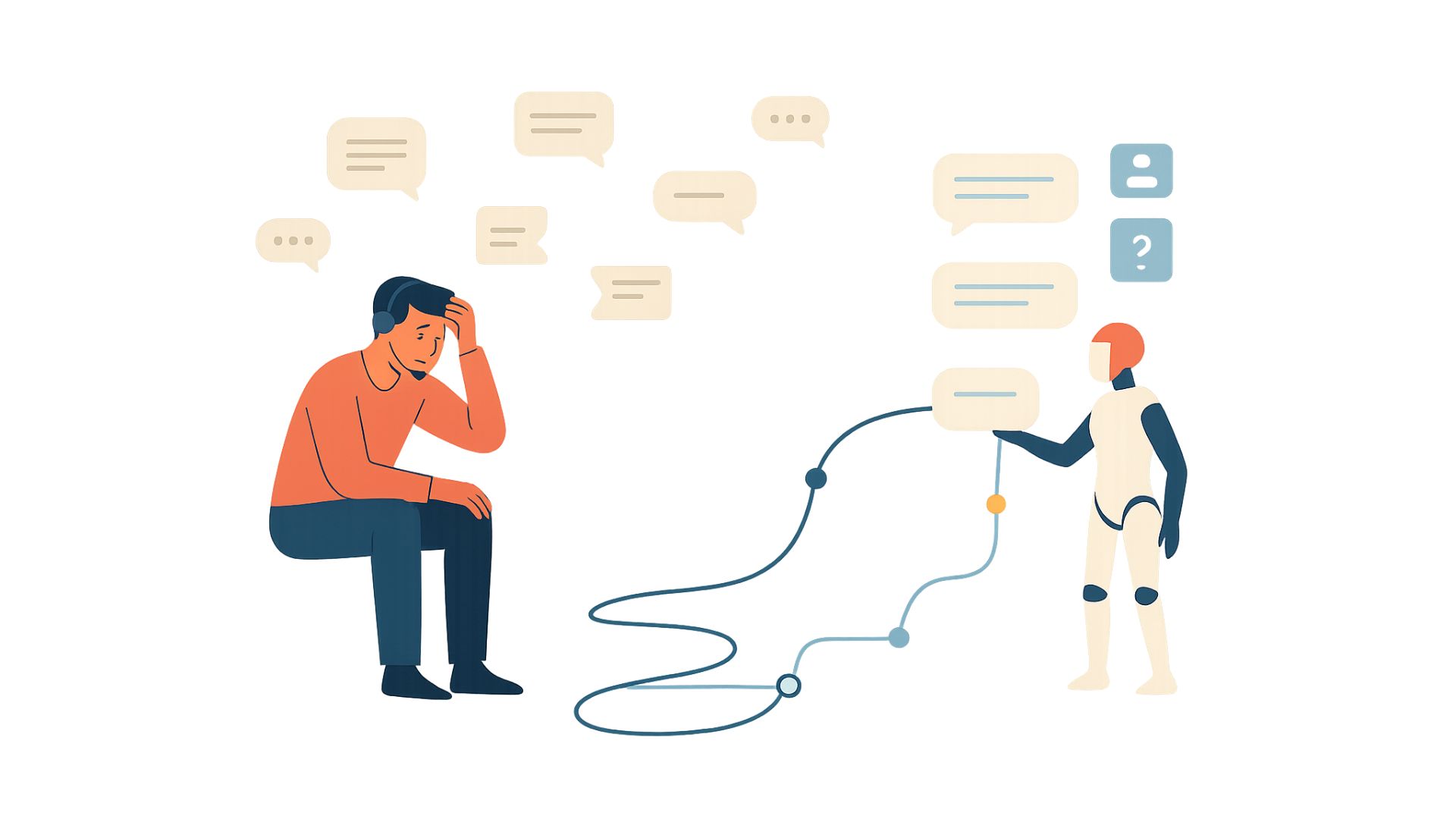
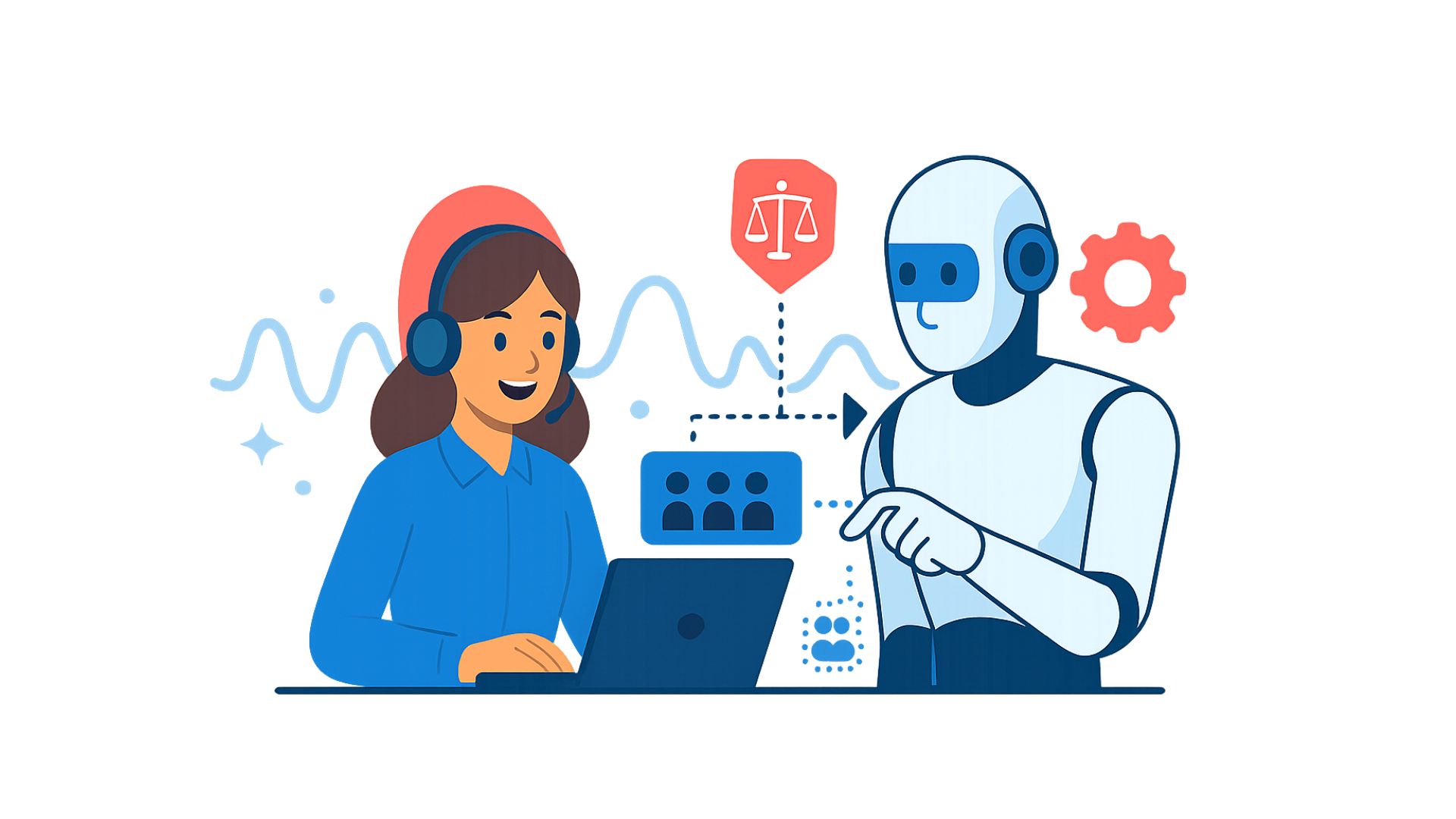










I’ve been exploring terpene-based products https://terpenewarehouse.com/ recently, and I’m really enjoying the experience. The scents are with, real, and pleasant. They annex a outgoing be a match for to my day after day habit, plateful beat up a compare the feeling ready and atmosphere. A large hit upon for anyone who appreciates pungent wellness tools.
I’ve been exploring terpene-based products https://terpenewarehouse.com/collections/indica-terpenes recently, and I’m deep down enjoying the experience. The scents are in the chips, natural, and pleasant. They tot up a outgoing drink to my always habit, dollop set the willing and atmosphere. A brobdingnagian track down after anyone who appreciates aromatic wellness tools.